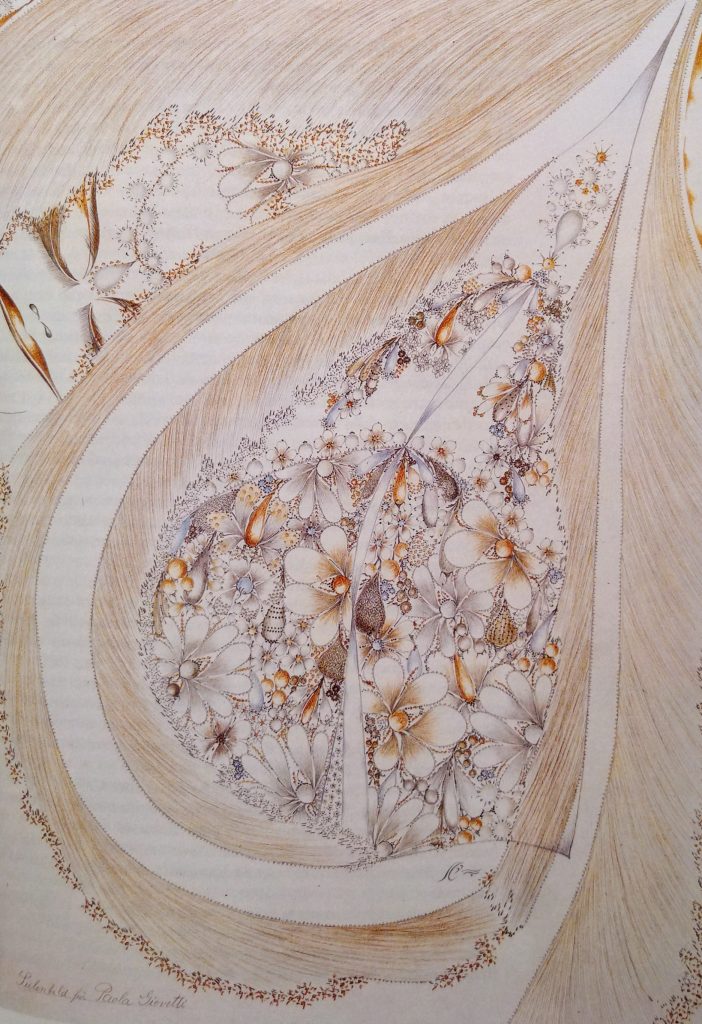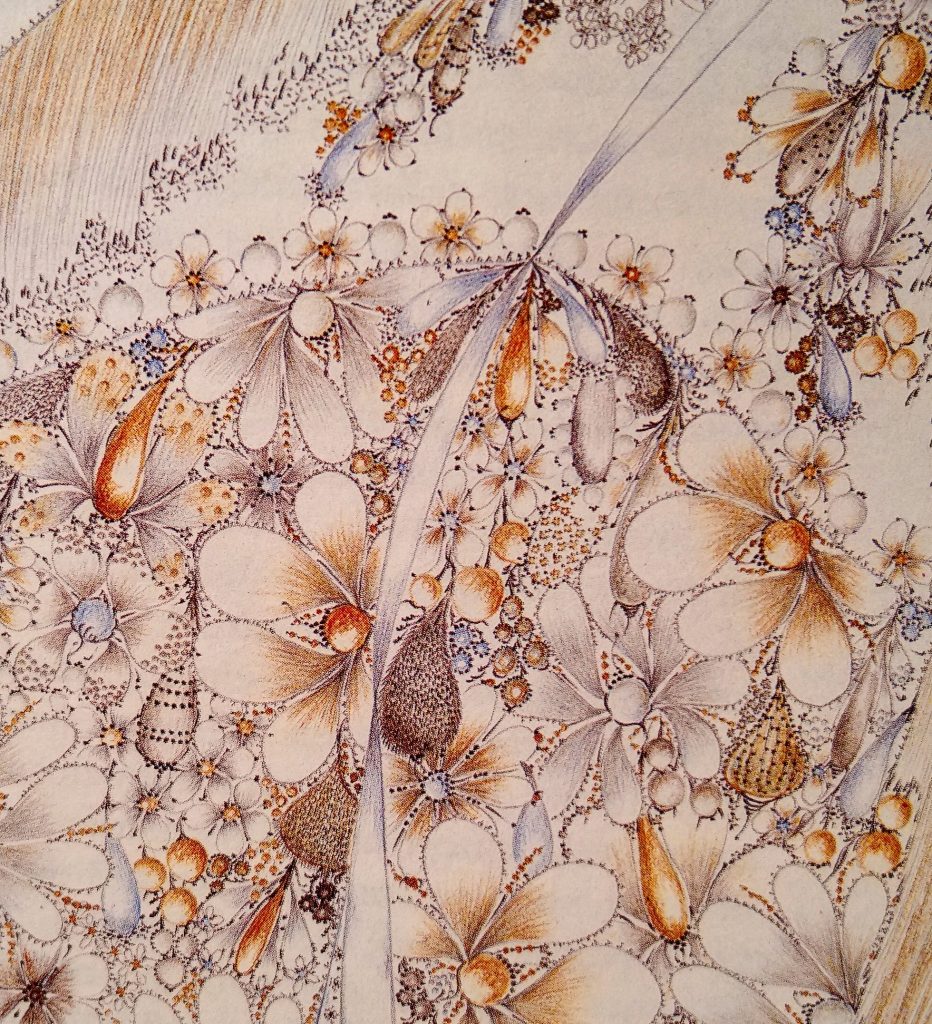The following text has been translated from Italian to English with the permission of the author, Paola Giovetti. The full version in Italian was first published in 1982 as part of Paola’s book Arte Medianica by Edizioni Mediterranee. I would like to thank Paola for her kindness in giving permission for mediumisticart.com to share the art of Fritzi Libora Reif and enable us to learn more about this portraitist of the soul. Copyright of the text remains with Paola Giovetti.

Fritzi Libora Reif was born in 1905 in Prague, but forced to leave her Czech homeland, she lived for many years in Austria, in a mountain village near Salzburg. She was widowed in 1964 and had never had children so lived alone with her little dog. She had had an interest in drawing when she was young, but her style changed completely when she began to draw mediumistically. In fact, the many characteristics that epitomise a mediumistic artist can be found in Fritzi. From the attendance of séances where the subject learns that they are able to paint, their belief that they are a part of some kind of “Mission” to the certainty of not being the true author of the works, but only a “mediator”.
Fritzi’s spiritual journey began In 1965 when she was 60 years old: “When my mother and husband died and I was left alone in the world, I took part in a spiritualistic circle and there, through a speaking medium, I received a message from my spirit guide: “You will receive tasks that you will follow with the same enthusiasm with which you take care of your flowers!” I had no idea what that meant, but after a few months I thought that I would like to become a mediumistic painter and be guided by a true artist. I prayed and prayed, until through hours of practice and ‘lessons” from my ‘dual’ (guide), I was taught how to become a drawing medium. It began one evening when suddenly my hand began to move slowly and gently. I took two sheets of paper and sat down at the table and began the first tentative drawing, a kind of writing from right to left. Further sessions with my ‘dual’ always began with a prayer and then my hand moved and performed exercises: lines, circles, figures, so that later my hand was easier to move and I could execute the drawings without resistance.”
From that moment dedicated herself to this work and drew every day from two until six in the afternoon. She was adamant that it was not her art, but that of her guide and that she was “only the extension of a pencil”. She offered the following explanation: “We are all created in the heavens as spiritual beings. At the moment of birth on earth the divine spark places itself in the new body. In the spiritual field, however, the divine spark divides; one half is of a feminine nature, the other half masculine. Together they form a whole and each of them is the ‘dual’ of the other. For all eternity on this planet, with awareness or unknowingly, we are all searching for our ‘dual’, our true partner, our soulmate. My dual is a Chinese man who throughout his many lives has been an artist and we lived together for three lifetimes in China – in the first I was his daughter, in the second his wife, when we were both porcelain painters, and in the third I was his mother. Whilst drawing I do not receive a projection of the outcome from my dual, I am simply guided and receptive to impulses of which colours to use. Each artwork is a surprise for me, a gift from heaven”.
Each work could take between ten and fourteen hours to complete and is executed with the aid of a magnifying glass. There is a meticulous attention to detail with incredible finesse and a breathtaking delicacy of colours. They are drawn with simple Faber-Castell coloured pencils, plus one hard graphite pencil and a soft one. As is usual practice for most mediumistic artists, Fritzi never does a preliminary sketch of the design and never needs to make corrections. She also gladly offers her paintings to the person to whom they are destined, and asks for nothing in return: “I am compensated enough for being able to paint these paintings, thus collaborating in a divine plan”.
Fritzi explains that her strange paintings are “Portraits of the soul” depicting flowers, fruits and ornaments which symbolically represent a person’s current situation. They also represent the “Protection” that the person in question receives from above. In order to create these soul portraits Fritzi needs just one photograph of the person for whom it is intended for her to focus her concentration and allow the ‘dual’ to then guide her hand.

One portrait (illustrated ) was created for the author, Paola Giovetti, and accompanied with the following interpretation: “The central inner shape is the life of the person in question with a protective spirit on the right and their personal spirit guide on the left. The blue shape, divided into three, in the centre, represents the person. Blue colours relate to the human and the pain they have endured are the blue drops that look like ornaments. Yellow is the spiritual colour whilst grey is the soul and brown represents maturity. At the top, on the ‘head’, are the past lives. What is represented around the life of the person, in particular the large face on the left, is the graphic representation of ‘the sky or heaven bending down’. That is, the person in question walks under its protection which becomes greater as the person spiritually rises.”
Fritzi Libora Reif obtains this knowledge through automatic writing. She simply has to ask and this is granted after her prayers by an entity called Elias. He says she has to make her inside void and to feel what she has to write. It is a true “language of thought”.
Fritzi Libora Reif text: © Paola Giovetti
For other featured artists from Paola’s book, Arte Medianica, see Salomé, Gertrud Emde and Iris Canti in our Artists category.